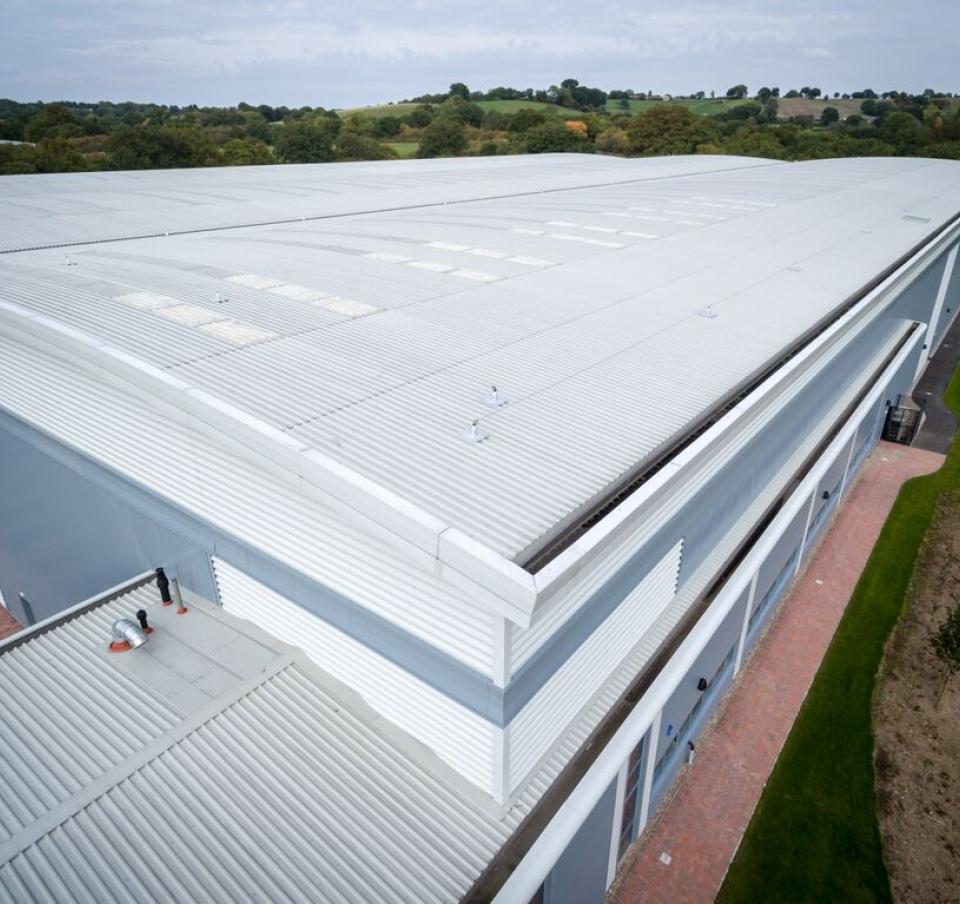Warehouse and “mega-shed” construction in the UK is booming. Expert analysts suggest that for every billion pounds accounted for by online shopping and other sales, 1.4 million square feet of warehouse space is required. As a result, 37 million square feet was expected to be constructed in 2021, which represents an increase of around 75% on the amount constructed in 2019.
Long-span industrial buildings provide storage, act as logistics and distribution hubs, and are also used as hangers and data centres. In fact, the UK has the second-largest hub of data centres in the world. However, this massive expansion in a very specific type of construction must not compromise our ability to respond to the climate emergency - which is where design for manufacture and assembly (DfMA) comes in.
What is DfMA and P-DfMA?
Design for manufacture and assembly, or DfMA, is an approach to construction that centres around the standardisation of components. P-DfMA means the same thing, and simply refers to a “platform” approach (hence the addition of the P) to DfMA.
The most common analogy for DfMA is the automotive industry, where common components are designed for use across multiple models to improve speed and efficiency.
When applied to construction, the aim is to create value by producing an array of standard solutions and repeatable elements that can be easily configured in different ways to suit the requirements of individual projects.
Bespoke components and elements can still be employed where and if required, but the time and material resource required to do so is reduced thanks to the level of customisation that can be achieved with the standardised elements.
DfMA brings the supply chain on board at an earlier stage of projects, essentially ensuring that it becomes part of the design team - in contrast to the traditional approach. As a client, government is increasingly looking to adopt DfMA as an approach because it reduces overall costs, reduces waste, and improves efficiency by avoiding duplication of effort.
Applying DfMA to warehouses and long-span buildings
Demand for long-span buildings is high and looks set to remain so for the foreseeable future. Creating value in the design and site assembly processes is therefore potentially lucrative both for those commissioning new buildings, and those assembling them.
DfMA allows for ‘derisking’ in the procurement and assembly of long-span buildings. As an approach, derisking encompasses the structural frame, roofing, and the facade, to create a waterproof shell. The floors of warehouse buildings are typically very sophisticated, requiring a watertight and airtight environment in order to control the humidity and allow them to cure correctly.
In DfMA, the ‘assembly’ of the building is a distinctly different approach to the ‘construction’ of a building, which is carried out from scratch. The number of site operatives required to assemble the building is reduced, and it can be done more quickly.
Furthermore, assembly teams can take the knowledge gained from one site and apply it across other sites. In an industry where, traditionally, learning from one site cannot always be applied to another, this represents a significant opportunity to make genuine improvements in efficiency.
Standard components and known performance properties mean buildings can be easily adapted or extended if the needs of an occupier change, or if a new occupier takes over from a previous tenant. More crucially from the perspective of meeting future construction needs, components - and even whole structures - can be reused, reducing the demand for new material resources in manufacturing.
What is FASTtruss?
Developed by Tata Steel in conjunction with architects and engineers Bryden Wood, FASTtruss is a DfMA approach specific to the roof trusses and structural frame for warehouses and other long-span buildings.
Tubular trusses can offer several potential benefits to long span buildings within certain optimal span ranges. Notably trusses have a greater strength to weight ratio than an equivalent steel section and are capable of longer spans with fewer columns.
With optimised design and a largely modular range of trusses it is easy to imagine that a warehouse using a DfMA solution could be available almost off-the-shelf, more quickly and more efficiently than the traditional design route.
Tata Steel is involved in several initiatives – such as FASTtrruss, and the Seismic platform – that aim to prove the concept of construction platforms and how they can be applied across different sectors. To keep up to date on our activity in modular construction, sign up to our newsletter.



































































































































































































































